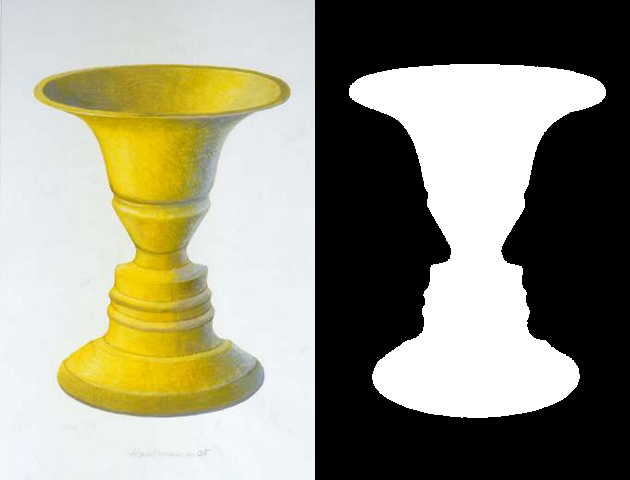Art Term of the Month: Negative Space – Rubin’s Vase
8/11/2021

Negative space is a powerful compositional tool – but easily overlooked both in art and design. Sometimes it takes a bit of training to be able to recognize it!
One of the best examples of the power of negative space is the famous optical illusion called “Rubin’s Vase.” Sometimes known as the Rubin face or the figure–ground vase, this image was developed around 1915 by the Danish psychologist Edgar Rubin to illustrate his research into the visual figure-ground relationship.
Looking at the image above, the illustration on the left appears to be just a vase on a white background – one element. However, when the shape of the background is highlighted in the image on the left, it forms the profiles of two faces. The negative element of the background can become its own positive element.
This dynamic push and pull between negative and positive elements is so important to a composition. Pieces without any negative space can feel crowded or poorly designed while pieces with too much negative space can overwhelm the positive shape. Next time you see a drawing or advertisement, try to visualize the background or negative space as its own shape. Does it seem to fit the balance of the piece? Are there any interesting shapes that leap out? You might notice something surprising!
